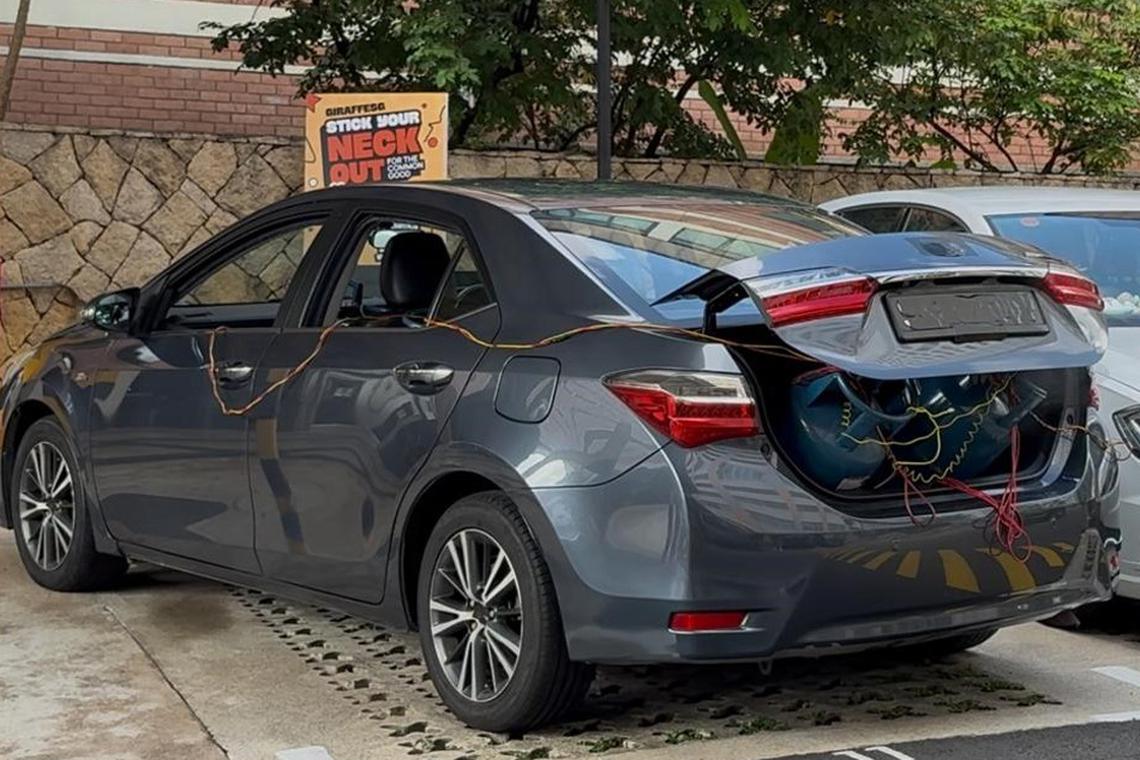
Fewer than 1 in 5 people noticed suspicious items during MHA’s social experiments
SINGAPORE – More than 2,500 people in Tampines and Bishan walked past a black suitcase and a black car with a concealed number plate, but fewer than 500 of them noticed the suspicious objects.
Even fewer of them either intended to or actually did alert the authorities to the items – just 26.
Over a few hours during lunch and dinner, the suitcase and car were left in public places to test the public’s response to terror incidents. The social experiments were
conducted by the Ministry of Home Affairs (MHA)
on June 10 and 13, respectively.
Noting the results of the social experiments, Minister for Home Affairs K. Shanmugam said: “How do we explain this reaction? The reality is, Singapore is a safe place, probably one of the safest cities of our size.
“For decades it has been like that, so very few people think in terms of crime or terror. That explains the awareness of threats.
“The level of safety we have is good, but it brings huge challenges when we want to educate the public to say ‘it’s not a question of if, but when’. It will happen at some point, and we need to be prepared.”
He was speaking on July 30 at the launch of MHA’s web series, What Would You Do When Terror Strikes, which features footage from the social experiments.
The suitcase contained a dummy improvised explosive device and was left next to a potted plant at Our Tampines Hub.
A red blinking light was later attached to the suitcase before it was placed by a pillar in front of a convenience store.
In the car-bomb simulation, the car, containing multiple gas cylinders, was parked near Bishan Community Club in the afternoon.
In the evening, more gas cylinders were added to the car boot, and the vehicle emitted smoke periodically.
Despite the escalation in both experiments, only 438 out of 2,530 passers-by noticed the suspicious items, and 26 of them either intended to, or did, inform the authorities.
MHA said the results of the social experiments differed from those of the 2024 SGSecure public perception survey, where 77 per cent of participants claimed they were generally alert and kept a lookout for suspicious activity and behaviour in public.
Telltale signs included oily stains near the zippers, bulges to indicate a high payload of explosives, and an actor who dropped the suitcase off before hurriedly moving away.
PHOTO: MHA
In the same survey, 88 per cent of respondents said they would alert the authorities if they spotted suspicious behaviour or items.
Senior Minister of State for Home Affairs Sim Ann, who also attended the launch event at The Projector at Cineleisure, said: “This shows that we still have some way to go in raising the public’s alertness and awareness and their readiness to combat terrorism.”
Mr Shanmugam, who is also Coordinating Minister for National Security, said the web series is an effort to increase public awareness about SGSecure messages like “Run, Hide, Tell” and “Press, Tie, Tell”.
SGSecure is a national movement launched in 2016 to prepare Singaporeans to deal with terrorist attacks and equip them with skills to handle a crisis.
The first of the three-episode series, which was released on MHA’s YouTube channel on July 30, features eight local influencers responding to a simulated terror attack.
The other two episodes will be released on Aug 13 and 27, and will feature footage from the social experiments conducted in June.
Read full article on The Straits Times - Singapore
Singapore Terrorism
sowhat 01/08/2025
It just proven we can’t be bothered and not that we are safe
Reply